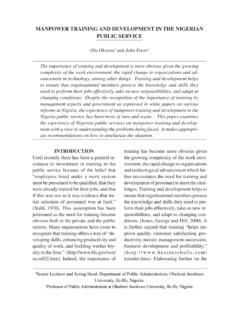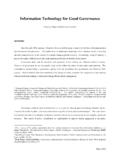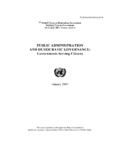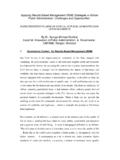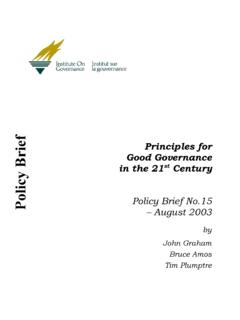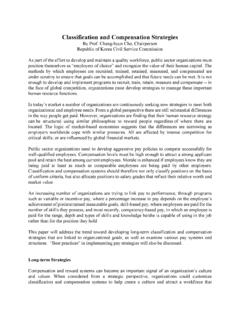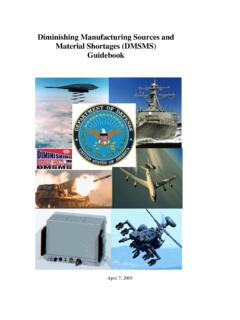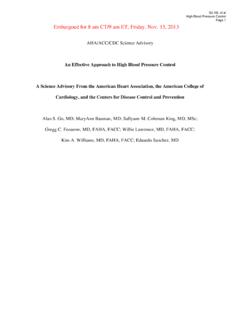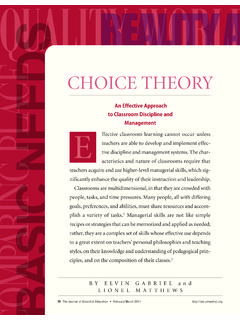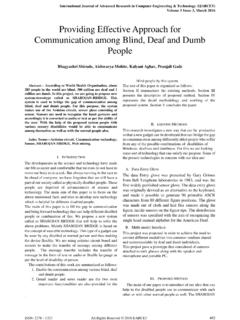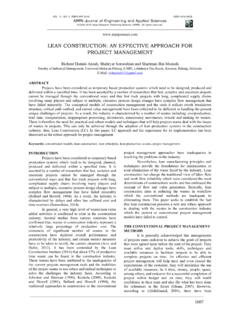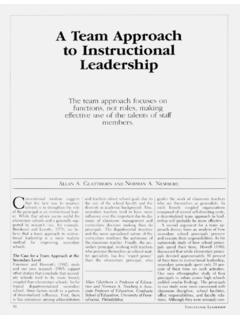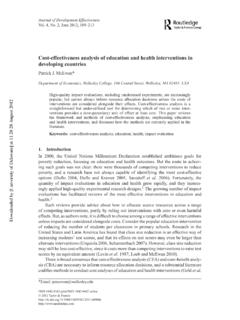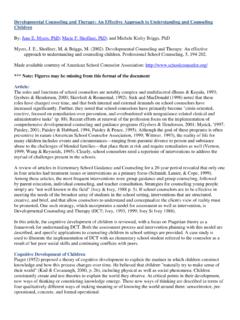Transcription of Developing Staffing Strategies That Work: Implementing ...
1 1 Developing Staffing Strategies That Work: Implementing Pragmatic, Nontraditional Approaches Thomas P. Bechet Most organizations understand the benefits that a longer term approach to staff planning can bring. Many actually attempt to develop Staffing Strategies (or strategic workforce plans, as they are also known). Unfortunately, these organizations often find that the traditional approaches to workforce planning that they try to use are ineffective, and expected benefits are not realized. The answer to this problem lies not in trying to implement the traditional approach more effectively, but in Implementing a completely different kind of process for strategic Staffing . This paper describes (and provides examples of) some of those less traditional, but more effective approaches.
2 The Strategic Staffing Process First, let s clarify our terms. I define strategic Staffing as the process of identifying and addressing the Staffing implications of business plans and Strategies , or better still, as the process of identify-ing and addressing the Staffing implications of change. The impact on Staffing should be defined (or at least discussed) whenever changes to business plans are being considered (whether near-term or longer-term). Others call the process strategic workforce planning, but to me, strategic Staffing emphasizes the longer term, business orientation of the process. By any name, this effort typically includes: Defining the number ( Staffing levels) and types (capabilities) of employees who will be needed at a particular point in the future to implement plans effectively (often including how that staff should be organized and deployed); Identifying the Staffing resources that are currently available; Projecting the supply of talent that will be available at that point in the future for which requirements have been defined ( , factoring in the effects of turnover, retirements, planned movement, etc.)
3 ; Identifying differences between anticipated demand and forecasted supply; and Developing and Implementing Staffing plans/actions needed to close talent gaps and eliminate surpluses. These basic elements are, of course, quite typical of any strategic Staffing or workforce planning process, and might be described in any text or suggested by 2any consultant. Successful implementation of a strategic Staffing process lies not in how these basic steps are defined. The devil is in the details or perhaps more appropriately in this case the devil is in the implementation. It is not the steps themselves that are important, it is how they are developed and implemented that counts. Traditional Approaches Just Don t Work Most organizations that attempt to implement a strategic Staffing process follow a fairly traditional approach .
4 Usually, these organizations include staff planning as a component of their annual business planning process. Often, these organizations request that managers define future Staffing needs for each year of the planning period (usually in terms of headcount, not required capabilities) using a common template or form. The templates are at a common level of detail and are based on common planning parameters ( , all units define requirements at a job-specific level for each of the coming three years). Once completed, these templates are often combined or compiled at various levels to create overall pictures of needs ( , unit plans are rolled up to a divisional level, divisional plans are compiled to create a firm-wide view).
5 Organizations then attempt to create meaningful Staffing plans to address these needs. Some organizations supplement these Staffing plans with a series of reports and listings ( , a list of openings and how they were filled, a summary of turnover rates over time for various types of employees). Unfortunately, rarely do these efforts result in specific Staffing and development plans that are actually implemented. Managers tend to see limited value in the process and complain loudly about the work involved. Most managers are being measured and rewarded for achieving short-term objectives that may be inconsistent with the longer-term view that strategic Staffing entails. Forecasts of needs are often hockey stick projections that are not realistic or grounded in business plans.
6 Some managers in more volatile areas, where business is changing rapidly, question the validity and value of processes that ask them to provide estimates of Staffing needs for points in time that are well beyond their ability (or need) to plan. Staff planning is often incomplete required Staffing levels may be forecast, but required capabilities are not. The Staffing plans that result from traditional processes such as these often provide little valuable information and are rarely used to drive Staffing decisions. Estimates of need are imprecise and inaccurate. In many cases, the output from the process is too high-level and generic to drive recruiting plans, especially once they have been rolled up to create that firm-wide view.
7 Since required capabilities are not usually defined specifically, it is difficult (if not impossible) to create action-oriented development plans for individuals that address anticipated capability shortages. Some organizations do not even create Staffing plans, opting instead to focus their workforce planning efforts almost solely on reporting and compiling Staffing information from the past ( , detailed turnover studies and descriptions of recent Staffing actions), rather than planning to meet future needs. In the end, there has been much work 3completed, but few results seen. The strategic Staffing process then becomes solely staff driven, or worse yet, disappears completely. More effective Approaches to Strategic Staffing Often, Implementing different, more pragmatic approaches to strategic Staffing can yield the high-quality results that organizations need and expect.
8 Start by defining an entirely different objective for the process itself. The objective is to build a context for decision making, not to predict the future. Don t try to predict future Staffing needs with certainty or define actions to be taken now to eliminate problems that may or may not occur in the future. At best, that is difficult to do well (and accurately) and may be viewed by managers as something that is nice to have but not absolutely necessary. Instead, consider a Staffing strategy as a longer-term context within which more effective near term Staffing decisions can be made. Not only is this a more realistic objective for the process, but its shorter-term focus might just capture the attention of those line managers who are being measured by, and rewarded for, achieving near-t e r m objectives.
9 Because it helps define appropriate short-term actions, it is more likely that the same line manager making the Staffing decision will still be in place to reap the benefits of that decision later on. Here is a simple example of how this objective works in practice. Suppose an organization has documented that it will need 25 additional project managers by the end of its fiscal year. How would a need like this be met? Positions could be filled through hiring, redeployment, promotion, work reassignment, use of contract/contingency staff, or many other sources. Which option is most effective ? To select the right option, that organization must have a sense of its future needs. If those project managers are needed in the future ( , beyond this fiscal year), a more permanent solution is most effective ( , hiring or pro-motion).
10 If, on the other hand, the need is a blip in the curve or the result of some project scheduling irregularities, a more temporary solution is better. For example, the company might hire contractors or delay new projects until the first quarter of the next year, so that existing project managers can be redeployed to those jobs, and an unneeded surplus of talent is not created in the future. In any of these instances, the best near-term solution can only be determined after the longer-term context has been defined. When searching for ways to improve (or initiate) the strategic Staffing process, consider the following options to traditional approaches. Address Staffing from a proactive, planning perspective, not just an implementation concern.

